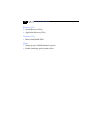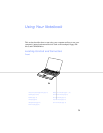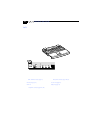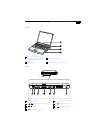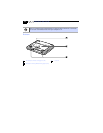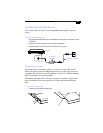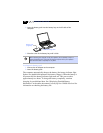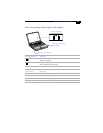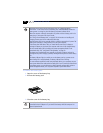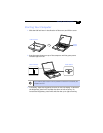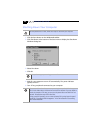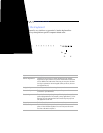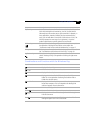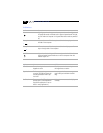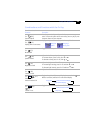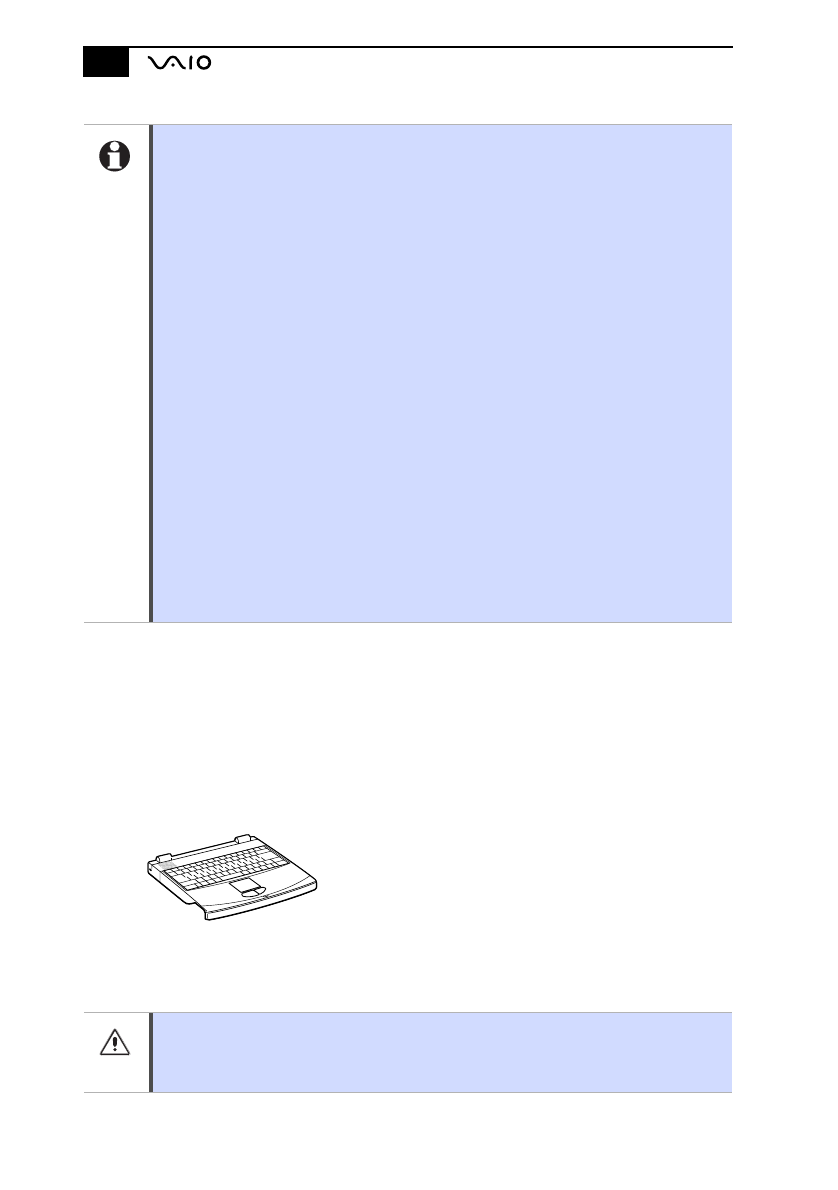
Notebook User Guide
To remove the battery pack
Open the cover of the battery bay.
Pull out the battery pack.
Close the cover of the battery bay.
To determine the amount of time the battery lasts, see Displaying Battery
Information in the online manual Customizing Your VAIO® Notebook. When the
battery power is running low, both the battery and power indicators blink.
When the computer is directly connected to AC power and has a battery pack in the
battery bay, it uses power from the AC outlet.
See Using a Second Battery Pack on page 35 for information on installing and
charging a battery pack in the multipurpose drive bay.
Keep the battery pack in the computer while it is directly connected to AC power. The
battery pack continues to charge while you are using the computer.
If the battery level falls below 10%, you should either attach the AC adapter to
recharge the battery or shut down your computer and insert a fully charged battery.
You can extend battery life by changing the power-management modes in the
PowerPanel utility. See Using Power Saving Modes on page 33.
The battery pack supplied with your computer is a lithium ion battery and can be
recharged at any time. Charging a partially discharged battery does not affect battery
life.
The battery indicator light is on while you use the battery pack as a power source.
When battery life is nearly depleted, the battery indicator starts flashing.
For some software applications and some peripheral devices, your computer may not
enter System Hibernation mode when the battery life is low. To avoid loss of data when
using battery power, you should save your data frequently and manually activate a
power-management mode, such as System Suspend or System Hibernation.
You may lose data if you remove the battery pack while the computer is on and not
connected to the AC adapter or if you remove the battery while the computer is in
System Suspend mode.



